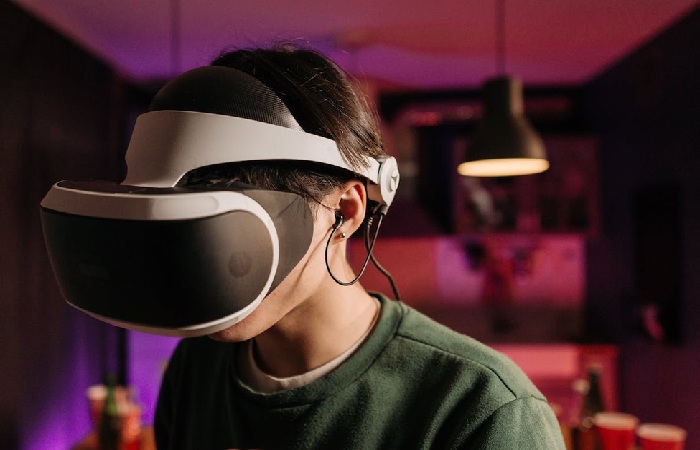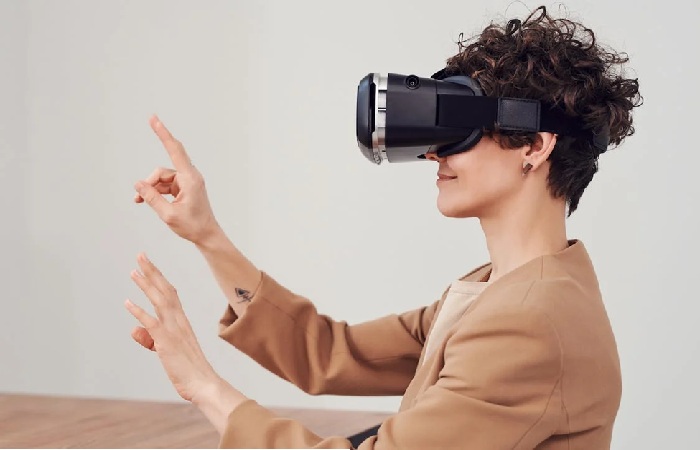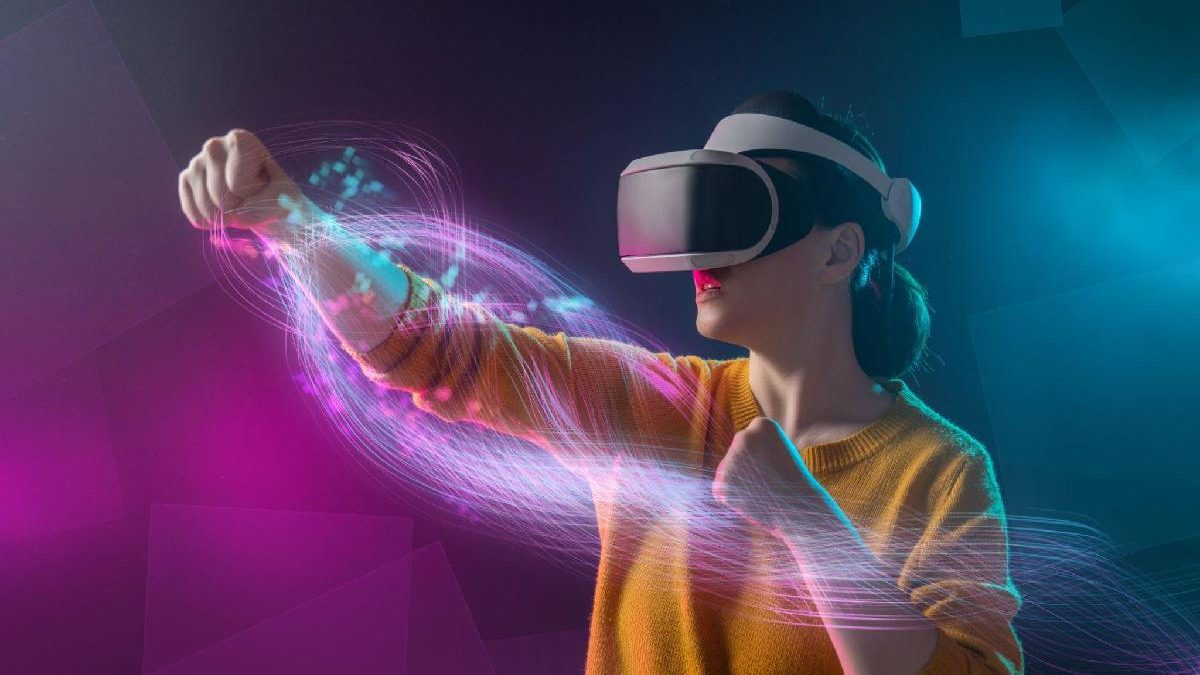Are you looking for a way to get the most out of your virtual reality (VR) experience? Well, if you’re in the market for an immersive experience that will blow your mind, then you’ve come to the right place. In this article, we’ll be exploring how you can take VR experience to the next level.
From selecting the right hardware and software to getting creative with your virtual environment, there are plenty of tips and tricks that can help make your VR experience even more exciting. We’ll go over all of these steps in detail and show you how they can help bring your VR dreams to life.
By the end of this article, you’ll have all the information you need to create an unforgettable virtual reality experience. So, if you’re ready for some VR fun, let’s dive right in!
Table of Contents
Benefits Of Vr
Immersing oneself in a virtual reality (VR) experience can be an exhilarating and rewarding experience. From the comfort of your own home, you can explore a wide variety of environments and activities that would otherwise be inaccessible to you.
The potential for exploration and discovery is vast, with new technologies constantly being developed to enhance the VR experience.
The benefits of VR are numerous and far-reaching. For example,
- It has been used in the medical field to help people overcome physical or mental disabilities.
- It has also been used in education to help students learn more effectively, as they are able to interact with their environment in a way that traditional learning methods cannot provide.
- Additionally, it can be used for entertainment purposes, allowing people to explore virtual worlds and engage in activities that would not be possible without the aid of technology.
- VR offers an unprecedented level of immersion that allows users to explore new experiences without ever leaving their homes. Whether it’s playing games, exploring distant lands, or engaging in creative pursuits such as painting or sculpting – VR offers something for everyone.
With its ever-increasing capabilities and applications, it is clear that VR technology has come a long way since its humble beginnings and will continue to evolve as technology advances.

Tips For Improved Immersion
For an enhanced virtual reality experience, there are a few tips to consider.
First and foremost, it’s important to make sure you have the right equipment. Investing in quality VR hardware and software will ensure your experience is as immersive as possible.
Make sure your headset fits properly and that you have a comfortable place to sit or stand while playing. For this purpose, you should choose a perfect headset by reading or comparing different headsets. For instance, Valve Index Vs. Oculus Quest 2 should be compared based on its features, comfort level, price, etc.
Additionally, if you’re using motion controllers, make sure they’re calibrated correctly for maximum accuracy.
Second, choose a game or experience that suits your interests. There are lots of great games and experiences available on the market today, so there should be something to suit everyone’s tastes.
Consider what type of game will offer the most immersive experience for you – whether it be a thrilling action-adventure or something more relaxed and peaceful – then pick accordingly.
Finally, take time to get used to the VR environment before diving in headfirst. As with any new technology, it can take some time to adjust to the controls and become accustomed to moving around in 3D space.
It also helps if you set yourself up with realistic expectations for your first few sessions; don’t expect immediate mastery! With patience and practice, soon enough you’ll be taking your VR experience to the next level.
Hardware And Software Requirements
Ironically, the most important part of taking your virtual reality experience to the next level lies in the hardware and software requirements.
After all, without any of these components, you won’t be able to get the best out of your system. Here are three must-haves for a great VR experience:
- An up-to-date CPU with a fast clock speed
- A powerful GPU with at least 4GB RAM
- A high-quality display with a refresh rate of at least 60Hz
In addition to these components, it’s also essential to have quality software installed on your device.
You’ll need software that is compatible with your hardware and can handle the demands of today’s virtual reality games and applications. This means having an operating system that can support multiple virtual reality programs as well as one that offers good performance and stability.
So make sure you choose a reliable platform before starting your journey into VR.
Types Of Content Available
There are a variety of content available for VR experiences. For example, there’s gaming, which comes in different types such as first-person shooters, puzzle games, and sports simulations. Then there’s educational content, like 360-degree virtual tours of museums or 3D representations of historical artifacts. And then there’s entertainment content like interactive movies and immersive music experiences.
Many businesses are now using VR to create unique customer experiences. Real estate agents can give potential buyers virtual tours of homes without having to physically visit them. Retailers can create interactive shopping environments that allow customers to try on clothes virtually or explore their store in a 3D environment.
VR is an incredibly powerful tool that can be used to create engaging experiences no matter what type of content you’re creating. Whether it’s gaming, education, entertainment, or something else entirely, the possibilities are endless when it comes to creating compelling and innovative VR experiences.

Enhancing The Visuals
One of the most important components of a virtual reality experience is its visuals. To take it to the next level, there are a few ways to enhance them.
- First, use higher resolution textures and 3D models. This will make the environment look more realistic and immersive.
- Second, pay attention to lighting effects and shadows. Using dynamic lighting can create an atmosphere that’s more engaging and life-like.
- Last, use post-processing techniques such as bloom or color grading to give the visuals more depth and vibrancy.
By following these steps, you can create an incredibly immersive virtual reality experience for your users.
Conclusion
Taking your VR experience to the next level can be a thrilling, immersive journey. To begin, you need to understand the benefits of virtual reality and the hardware and software requirements needed to get started. Once you have the basics down, you must consider what types of content are available and how to enhance your visuals for an even more realistic experience.
To maximize your VR experience, focus on improving immersion through audio, visuals, and haptics. Experiment with different settings to find out what works best for you. Utilize alliteration in sound effects and music cues to add depth and texture to the environment. Adjust the lighting angles, colors, and textures of objects around you for a more lifelike feel.
Finally, don’t forget about safety protocols when taking your VR experience to the next level. Make sure that you have a comfortable headset on securely with plenty of support padding and that there is sufficient space around you for unrestricted movement. With these tips in mind, I’m confident that you’ll be able to take your virtual reality journey up a notch.


